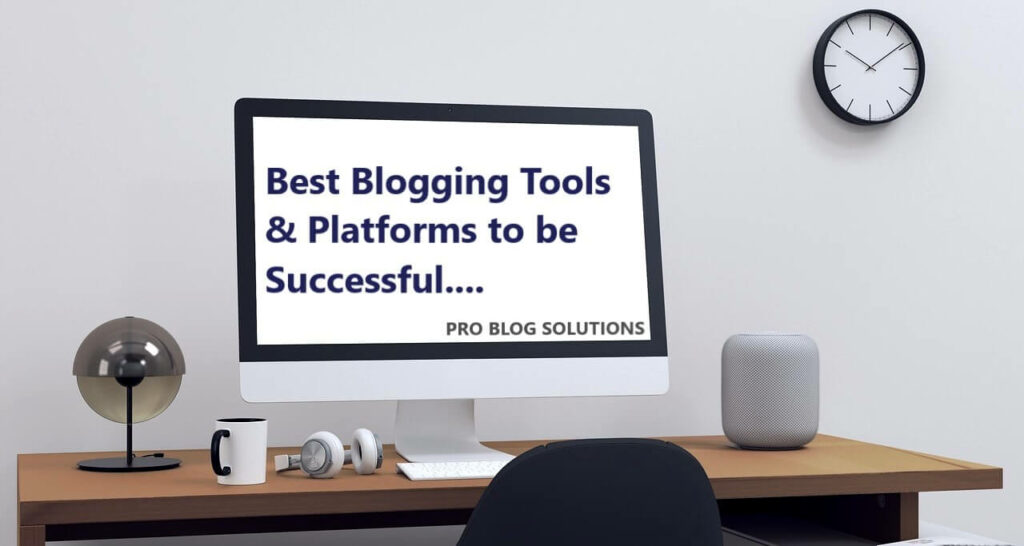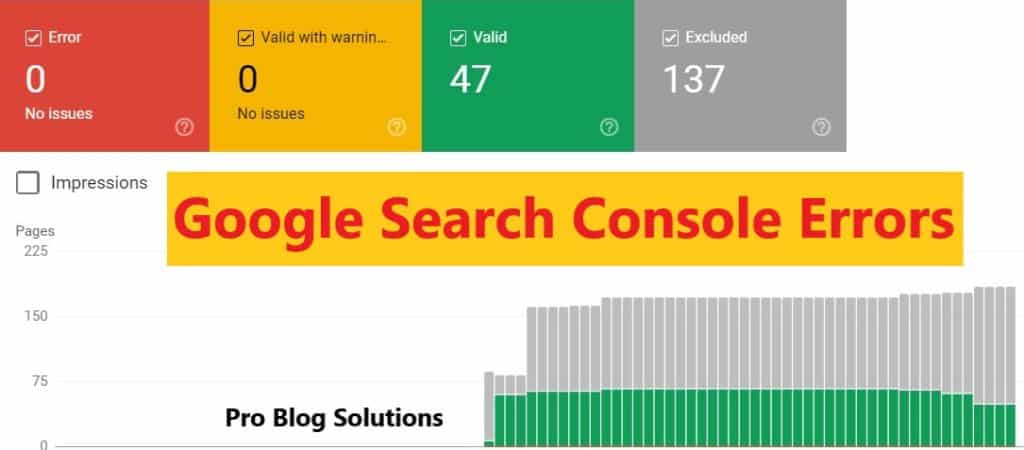So, the most discussed question for every blogger or webmaster is how to discover your ideal blog audience? Create a gallery, build exposure, increase credibility, and create incredible value for you and your audience by writing articles for your audience that they want to read and share.
What is a Blog Audience?
Your blog audience is the most crucial factor in the success of your blog. If you don't know who you're writing for, you'll never be able to create content that they'll find valuable. That's why it's so important to take the time to discover your ideal blog audience. This will help you focus your content, target your marketing, and build relationships with the people most likely to be interested in what you say.
This article walks you through discovering your ideal blog audience. We'll provide detailed examples and tips so you can create a profile of your ideal reader to help you take your blog to the next level.
What Is The Difference Between a Target Audience and a Target Market?
Target market and target audience are often interchangeable but aren’t synonymous. There are some critical differences between the two concepts, most notably how they affect the decision-making process for a small business.
A target market impacts all decisions made by a small business. For example, you could develop products or services based on what customers want or design those same products or services to appeal to a specific demographic. This affects packaging and pricing decisions, as well as sales processes.
Products or services are developed to address the needs and wants of a particular target market. In contrast, a product or service may be designed to appeal to a wide range of people, such as “the masses.” But it doesn’t mean that you’re catering to everyone; instead, you’re targeting a particular group of consumers.
Packaging and pricing decisions are driven by the target market. You'll likely charge less per unit if you sell your products in bulk. Likewise, you might lower prices on popular items among your target market.
Sales processes are structured around the needs of the target market. Salespeople focus on meeting the target market's requirements because they understand the best ways to make deals happen.
So, if you’re selling to a large number of people, you should consider developing products or services that cater to the needs of that broad market. However, if you’re trying to sell to a smaller group of consumers, you should tailor your offerings to meet their unique needs.
Identifying and Understanding Your Target Audience in 2026:
If you do not know your audience, what to do to discover your ideal blog audience?
Define Your Topic:
Defining your topic is the first step in discovering your ideal blog audience. What are you passionate about? What do you know a lot about? What are you interested in writing about?
Once you know your topic, you can start thinking about the people interested. What are their demographics? What are their interests? What are their pain points?
Conduct Research:
There are several ways to conduct research on your ideal blog audience. You can:
- Survey your existing readers. If you already have a blog, you can survey your current readers for their feedback on your content and interest.
- Look at your analytics. If you have Google Analytics set up, you can look at your analytics to see who is visiting your blog and what they're reading.
- Do keyword research. You can use keyword research tools to see what keywords people search for related to your topic.
- Look at your competitors. Who are your competitors? What are they writing about? Who are their readers?
Create a Reader Persona:
Once you've researched, you can start creating a reader persona. A reader persona is a semi-fictional representation of your ideal reader. It should include their demographics, interests, pain points, and goals.
The bar graph shows that the ideal blog audience is ages 18 and 54. The largest group of blog readers could be in the 25-34 age range, followed by the 35-44 age range. The number of blog readers starts to decline after the age of 55.
This bar graph can be used to help you discover your ideal blog audience. If you are targeting a specific age group, you can use this graph to see how many people in that age group are reading blogs. You can also use this graph to compare different age groups to see which has the most potential readers.
Here are some examples of questions you can ask to help you create your reader persona:
- What is their age?
- What is their gender?
- What is their location?
- What are their interests?
- What are their pain points?
- What are their goals?
Use Your Reader Persona to Guide Your Content:
Once you have a reader persona, you can use it to guide your content. This means writing content relevant to your readers' interests and solving their problems.
For example, suppose your reader persona is a 35-year-old woman interested in fashion and beauty. In that case, you might write blog posts about how to style your hair for a special occasion, create a budget-friendly capsule wardrobe, or apply makeup for beginners.
Promote Your Content to Your Ideal Audience:
Once you have created content relevant to your ideal audience, you must promote it. This means using the proper channels to reach them and the right messaging to attract their attention.
For example, suppose your reader persona is a 35-year-old woman interested in fashion and beauty. You might promote your content on social media, email newsletters, or online forums.
Discovering your ideal blog audience is an essential step in the success of your blog. You can create a successful and rewarding blog by promoting your content to your ideal audience.
Here are some additional tips for discovering your ideal blog audience:
- Use social media. Social media is a great way to connect with potential readers and learn more about their interests. Follow relevant hashtags, join groups, and interact with people interested in your topic.
- Attend conferences and events. This is a great way to meet people interested in your topic and learn more about their needs.
- Ask for feedback. Once you've created some content, ask your readers for feedback. This will help you understand what they like and dislike about your content and what they're looking for from your blog.
After all this, the other step in building an audience and discovering your ideal blog audience is to figure out what you want in your perfect audience.
Stop wasting your time writing such articles in which your audience is not interested.
How to Discover Your Ideal Blog Audience
You may also like to read:
- Earn 10-50 Dollars Daily From Google Adsense
- Install WhatsApp on PC and Fix Problems With Windows 10
- High Domain Authority DoFollow Article Submission Sites
- How to Get 50k Monthly Visitors to Your Blog?
- 207 High Domain Authority Backlink Sites List
Discovering Your Ideal Blog Audience: A Gateway to Blogging Success
Use these tips to know who your audience is, how to find your ideal blog audience, and how to open the door to a new audience.
Benefits of Discovering Ideal Blog Audience in 2026
Imagine pouring your heart and soul into crafting blog posts, only to be met with crickets. Sounds pretty discouraging, right? That's why discovering your ideal blog audience is the unsung hero of blogging success. It's like having a treasure map to guide your content creation and lead you to engaged readers, loyal fans, and, ultimately, achieving your blogging goals.
But just how beneficial is knowing your ideal audience? Let's delve into the treasure chest and uncover the golden nuggets you can expect:
1. Laser-Focused Content:
- No more shooting darts in the dark: By understanding your audience's demographics, interests, and pain points, you can tailor your content to their needs. No more generic posts that resonate with no one!
- Become a trusted source: When your content directly addresses their challenges and aspirations, you build trust and authority. You become their go-to expert, the lighthouse in their information storm.
Example: Imagine you blog about healthy living. Knowing your audience is primarily young working professionals struggling with meal prep, you create bite-sized recipes, quick workout routines, and meal planning tips – content that speaks directly to their busy lives.
2. Skyrocketing Engagement:
- Comments, shares, and likes galore: When your content resonates, people can't stop talking about it. You'll see a surge in engagement, fostering a vibrant community around your blog.
- Boost your SEO: Google loves relevant content. By targeting your audience, you naturally optimize your blog for relevant keywords, leading to higher search engine rankings and more organic traffic.
Example: Your fitness blog explodes with comments and shares when you post a “30-minute bodyweight workout for hotel rooms” after learning many readers travel frequently for work.
3. Building a Loyal Fan Base:
- From readers to fans: When you consistently deliver content that resonates, you create a loyal fan base who eagerly awaits your next post. They'll be your cheerleaders, spreading the word about your blog.
- Monetization opportunities: A dedicated audience opens doors to various monetization options, like sponsored content, affiliate marketing, or even selling your own products or services.
Example: Your loyal readers, inspired by your healthy living journey, beg you to create an online fitness course, leading to a new income stream for you.
4. A Clear Path to Success:
- Define your goals: Knowing your audience helps you define clear goals for your blog. Do you want to increase brand awareness, drive sales, or build a community? A defined audience enables you to tailor your strategy for maximum impact.
- Measure and adapt: With a specific audience in mind, tracking your progress becomes more effortless. You can analyze what resonates and doesn't, allowing you to adjust your content and refine your approach.
Example: By identifying your audience as aspiring entrepreneurs, you track blog post downloads of your free “5 Steps to Starting Your Business” guide, showing you what content converts readers into leads.
Discovering your ideal blog audience is an investment that pays off handsomely. It's like planting the right seeds for a bountiful harvest. So, grab your shovel, embark on this treasure hunt, and unlock the door to a thriving, engaged, and successful blog.
Remember, this is just the tip of the iceberg. The deeper you understand your audience, the more benefits you'll uncover. So, get curious, ask questions, and listen to your readers. They'll guide you to blogging riches.
What Do You Need to do to Find Your Ideal Audience?
Finding your ideal audience and turning them into loyal fans isn’t as complicated as you think. It takes solid research, dedication, persistence, and a willingness to experiment.
Discover Who are They?
Family, clients, or customers, identify each part of the audience hearing today.
Really, Do You Want to?
Identify new areas you want to add to your target audience today to discover your ideal blog audience. Please consider their needs or barriers to the additional commitment for your platform. Try to Involve them.
Try to Create Profiles
Create a character for each sector of the audience. Consider the demographics, hobbies, professions, needs, desires, problems, knowledge, perceptions, and objectives. Specify the value you can adapt to each piece to discover your ideal blog audience.
Creating Your Target Audience Definition
Before you can create content that resonates, it helps to know your intended audience. An audience definition should ideally connect these three things to discover your ideal blog audience:
- What is your product or service?
- Your primary audience's demographic.
- Your content's mission.
Try to Find The Harsh Realities
Apply survey, investigation, etc., and try to know what attracts your audience to your current platform and what your ideal audience is here and there. Do your users know what is available to them? Is it because they do not think it is for themselves?
Quick Solutions to Discover Your Ideal Blog Audience in 2026:

The customer always comes first. So the saying goes. Without anyone to buy your products and services or read your blog, your business website or blog idea is just an idea. So, how do you discover your ideal blog audience?
Your ideal audience is a previous version of you. The things you create are informed by the experiences you’ve had.
How to Discover Your Ideal Blog Audience
Provide Personalized Experience
Why should you care about finding or discovering your ideal blog audience? Knowing the perfect audience helps you create more targeted campaigns. Improve the conversion rate at your store and utilize your resources better. Provide a more personalized experience to the users.
Use Your Time and Money Wisely
When just starting blogging, you want to ensure you use your time and money wisely. The best way to ensure your efforts aren’t in vain is to know who you’re writing for. That’s the best way to ensure your articles generate as much valuable traffic as possible to discover your ideal blog audience.
Your Audience is Influential
You better understand their needs and wants when you target a particular audience. Your blog posts will perfectly answer your target audience's questions and problems.
Write Helpful Content
It will help you identify your reader’s pain points. It doesn’t matter if you’re writing great content, but you are not getting organic web visitors. You should write helpful content but write the right content to discover your ideal blog audience.
Understand Your Blog’s Mission Statement
You need to know whom your content is going to serve. What problems do you want to discuss in your blog? You can’t define your target audience until you understand your blog's goals.
They are the people who are most likely to benefit from what you have to offer, and you must learn as much about them as possible to discover your ideal blog audience. The more you know, the more you’ll sell, or we can say you can attract readers to your blog.
Blogs are Made to be Read

Believing in yourself as a blogger or webmaster is excellent. However, sometimes, this can make a blogger blind. They could focus too much on blogging about topics they feel like writing about without worrying about the relevance of their content to their readers.
This is not a good practice for bloggers. It may get you traction initially, but you will eventually lose it after some time. Maintaining relevance is vital to a successful blog, and to do this, you must understand your content core to discover your ideal blog audience.
Remember, Everyone isn’t a Buyer
Sometimes, it isn’t easy to know who makes a purchasing decision. And in many cases, it is a joint decision. So, we recommend media strategies that target the user.
For instance, it targets wives and girlfriends shopping for men rather than just selling specifically to men.
Join the Public Groups
Search and subscribe to the network. Get a solid foundation in your niche to see how others maintain public relations to discover your ideal blog audience. Determine the buzz they create, what they write about, and how they deal with their audience, such as social networks, newsletters, and recently published newspaper articles.
Research Your Competition
What is your competition doing, and what are they not doing?
Visit a competitor’s blog, open one of their top articles because most blogs highlight their popular posts, and compare it to one of your best blog posts.
Take note of any topics they cover regularly and see what you can do better. You can analyze your competitor’s blog using tools such as:
- Ubersuggest
- Ahrefs
- SEMrush
With the help of these tools, you can:
- Analyze site traffic on the competition’s blog.
- See their most popular and least popular posts.
- Identify high ROI keyword opportunities.
- Discover the competitor’s SEO ranking.
The table below gives you a comparison of the three tools:
| Analyzing Tool | Pros | Cons |
| Ubersuggest | It is easy to use and suggests good content ideas. Has all the functions you need for basic competitor research. | No automated reports, and you can’t export reports. |
| Ahrefs | You will get detailed competitor analysis with multi-domain support. It has a great backlink monitoring tool. | The paid version is pricier than most marketing tools, hard to use, and needs integrated help guides. Too few integrations with other services. |
| SEMrush | Great keyword and competitor analysis tool. Detailed SEO auditing and reporting, and you can track a site’s progress over time. | Learning takes a while, and there is no in-depth social media reporting. Doesn’t allow archiving of projects and can be slow with large sites. |
Once you find out what’s working for your competition, don’t just replicate it on your blog. Ask yourself these questions:
- What type of content does your competition publish, and will it work for you?
- Is your competitor’s blog lacking anything?
- How are their engagement levels compared to yours, and what are they doing right or wrong?
- How is the quality of their content compared to yours?
Studying your competition can help you refine your content strategy and write articles your customers want to read.
Refine Your Target Market
Once you know what benefits your product or service brings to readers, you can start to see trends in who might be interested in them to discover your ideal blog audience. For this, we need to see the three main points of data:
- Demography
- Interests
- Purchasing intentions
By applying these segments to your target market, you can start narrowing down your target audience. You may end up with specific age groups, people in particular locations, those with specialist interests, and other factors to discover your ideal blog audience.
Use Google Analytics
If you find data fascinating, you may lose hours of your life scrolling through Google Analytics, looking at its different reports. It is an ocean of information and a great way to identify the types of consumers already interacting with your brand.
Using the Google Analytics Audience tab, you can quickly see your customers and website visitors, interests, and locations to discover your ideal blog audience.
The Best Practice is to Cover These Details:
- Who?
- What?
- When?
- Where?
- Why?
Get Involvement Participate and Engage
Start participating, commenting, and writing helpful content that solves your audience's problems and answers all their questions to discover your ideal blog audience.
Monitor your best and worst content. You can use the Search Console for more details.
How to Discover Your Ideal Blog Audience
Suppose you already have a blog driving some traffic and bringing in a steady stream of engaged readers. In that case, your comments section will be one of the most valuable destinations to learn more about your target audience.
Write Exciting Topics Searched By Public

Google Trends is an excellent tool for researching topics and ideas to discover your ideal blog audience, but unfortunately, not many people use it. In some ways, this is good because it gives you an advantage over your competitors.
The main reason to use Google Trends is to find trending topics related to your niche. This is not a tool for thorough keyword research, but it can hint at what broad issues are being searched on Google.
More exciting articles for you:
- How to Earn the First 100 Dollars From Adsense?
- Make Firefox Faster Than Chrome With 7 Solutions
- How to Show Breadcrumbs in Google Search Results?
- Easily Remove Password From PDF Document
- Ways to View or Mirror Phone Screen on PC
Discover Search Terms
Use search terms to find out how your current audience is looking for you and how new members, in general, will find you. Continue to improve these words to write unique articles as you work to see and refine your audience and discover your ideal blog audience.
Know About Which Ideas Are Best
It's easy to think you should only target topics with high volume and low difficulty. This is indeed an easy way to generate lots of traffic quickly. But it's not necessarily the best approach if those ideas aren't the most valuable things you could write about.
It's challenging to determine precisely which posts will do best. However, combining data with experience will help you improve results over time.
Create Customer Surveys

Surveys are a fantastic and direct way to identify your ideal customer and gain tangible feedback about your products and services. Consider creating simple online polls on Twitter or accompanying your social media posts with questions to discover your ideal blog audience.
Your audience will appreciate you getting to know them, and you will receive valuable data and feedback. Users with big Twitter followers can instantly gauge their audience views on specific products or topical subjects.
Don’t Stress Over Word Count
While some research suggests longer blog posts (2,200 words and over) may rank higher in Google and get more social shares, the most important thing is not how long your article is; it’s all about quality, which matters. An excellent 1000-word post is much more effective than a 3,500-word post, so focus on providing real value to your customers rather than aiming for some magical length.
Knowledge is Real Power
Knowledge is essential to help you with all aspects of your platform's strategic planning, not only for writing the article to discover your ideal blog audience.
Think about who you are, how to create unique value for each segment of your audience and the solutions that can provide information for their advantage.
How to Discover Your Ideal Blog Audience
Give your power efforts with these tips to deepen your current audience participation, increase and diversify engagement and loyalty, and open the door to a new audience.
FAQs About How to Discover Your Ideal Blog Audience in 2026:
-
Why your ideal audience isn’t your only audience?
No matter how narrow an ideal audience you choose to target, your work will still get seen by others outside that niche; they’ll still become a part of your audience. So, you don’t have to worry about going too narrow to discover your ideal blog audience.
-
Why the right blog audience is essential?
Reason 1: Choosing the right readers helps you know what content to create.
Reason 2: Choosing the right readers means an increase in your conversions. -
How do you identify ideal readers for your website?
If you know exactly who would benefit from your content, what they like and dislike, how they spend their time, and what their other interests are, you can find them more quickly, make deeper connections, and serve their needs better.
Final Words on Discovering Ideal Blog Audience in 2026:
Doing the hard work upfront to discover your ideal blog audience will help you create your marketing strategy. This will become a solid foundation that you can use to grow your brand.
In a nutshell, the right niche and your ideal target audience would be one that:
- Possesses characteristics from your ideal customer avatar.
- You can reach and market to large numbers of your target audience consistently and quickly.
- Have a 99% fit to your product or service and buy something you are selling or will be selling.
- You are passionate about serving long-term.
- Makes you feel good.
- Other blogs and websites have succeeded by targeting them.
The above tips will definitely help you plan your articles and products strategically. Each time you write an article or product details, you’ll craft something your audience is interested in and can benefit from. Your blog will be a powerful tool in helping them solve their problems, and when they have a need, they’ll come to you looking for answers or products.
We hope these tips on discovering your ideal blog audience will help you understand your visitors. If you have any suggestions, comment below.






